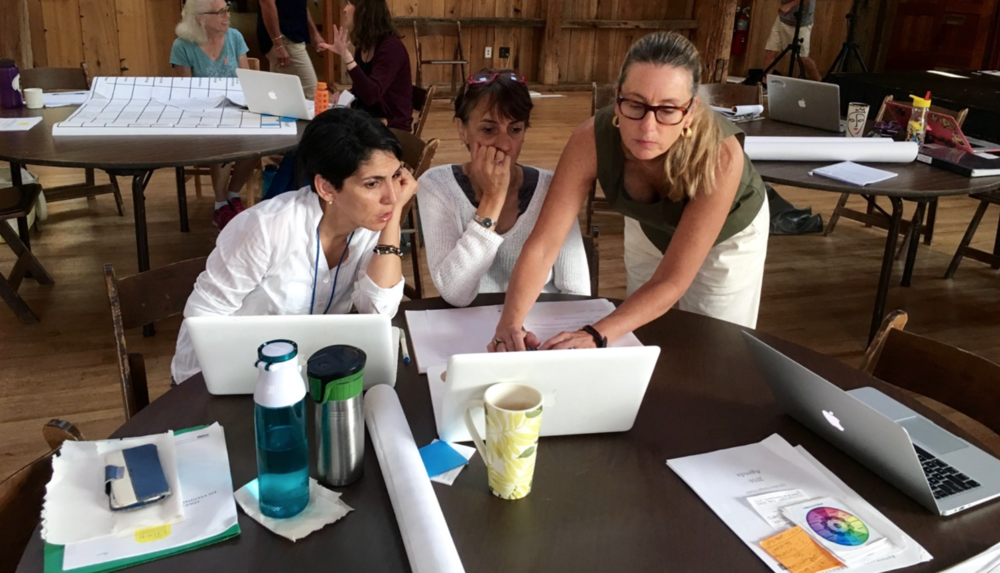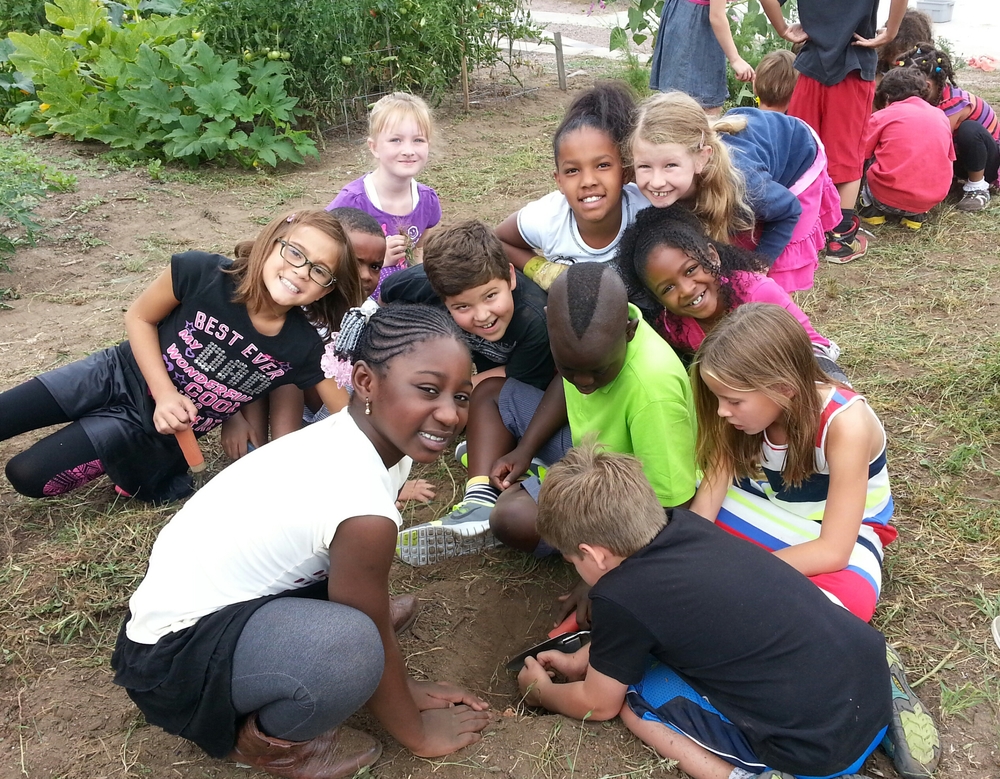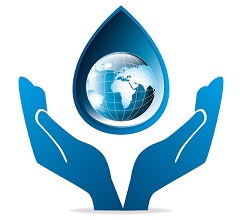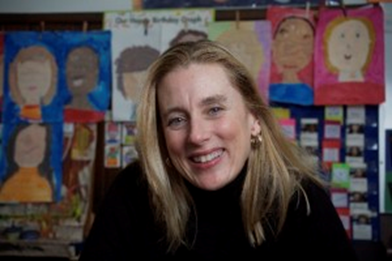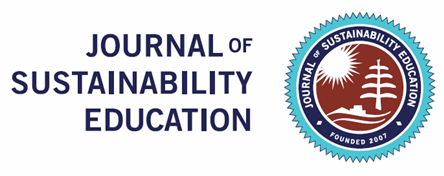By Jaimie P. Cloud
For those of you who understand what EfS is, who can articulate why you should do it, who are inspired and clear about the role that education plays in accelerating the shift toward sustainability… and just need some guidance on HOW to embed EfS into your core curriculum, this is for you. If you don’t yet have the tools and vocabulary you need to make sense of this, you can participate in one of our introductory professional development programs and receive follow up coaching services. Or take advantage of our “do it yourself” resources in our bookstore. The Fish Game and The EfS Curriculum Design Manual will get you started.
VOCABULARY
-
EfS Standards - The knowledge, skills, attitudes and habits of mind of Education for Sustainability (EfS) are embedded in The Cloud Institute's EfS Standards and Performance Indicators. Aligned to Common Core, Next Generation Science and other and State educational standards, each EfS Standard has a set of coded Performance Indicators used to guide educators as they infuse their curriculum, instruction and assessment practices with Education for Sustainability. We believe that by meeting these EfS standards, young people will be prepared to participate in, and to lead with us, the shift toward a sustainable future. The Cloud Institute's EfS Standards and Performance Indicators are available on the Rubicon Atlas Curriculum Mapping system. Contact us if your school is using Atlas and would like access.
-
Backwards Design/Understanding by Design (UbD) - Understanding by Design® (UbD™) is a framework for improving student achievement. Emphasizing the teacher's critical role as a designer of student learning, UbD™ works within the standards-driven curriculum to help teachers clarify learning goals, devise revealing assessments of student understanding, and craft effective and engaging learning activities. UbD was developed by nationally recognized educators Grant Wiggins and Jay McTighe, and published by the Association for Supervision and Curriculum Development (ASCD). “Backwards Design” is a term we use to describe the process of designing curriculum with the end (the desired learning outcomes) in mind.
-
Levels of Accomplishment
Introductory: Students are assessed at an introductory/basic level of accomplishment
Progressing: Students are assessed based on their ability to demonstrate progress toward accomplishment
Mastery: Students are assessed for mastery of the content or skill being addressed
-
Curriculum Stages - In UbD and Backwards Design, there are three stages to the design process. The first two stages make up the curriculum.
Stage 1 - Learning Outcomes (rationale, transfer goals, standards, enduring understandings, content knowledge, skills, /Essential Question(s).
Stage 2 - Assessments and Explicit Performance Criteria
-
Instruction Stage - In UbD and Backwards Design, the third stage is made up of the instructional practices that deliver on the curriculum.
Stage 3 - Lessons, Activities, Learning Experiences
PRE-REQUISITE STEPS
A. Acquire a shared understanding of sustainability and Education for Sustainability in your school community; develop personal rationales for educating for sustainability; become informed, inspired and hopeful about the role that education can play in making the shift toward a sustainable future
B. Align the EfS Enduring Understandings, Standards and Performance Indicators to your core curriculum.
(This activity is in the EfS Curriculum Design Manual in the bookstore. You can also receive the protocol with the EfS Alignment Charts available in the bookstore.)
C. Select a unit of study you want to “sustainablize” or design from scratch. Make note of how much time you have to deliver the unit. (Time is our only currency.)
CURRICULUM STAGE 1 - LEARNING OUTCOMES/ESSENTIAL QUESTION(S)
D. Select the required standards (Common Core, NGSS, Content, etc.) that this unit will address.
E. Select the EfS Enduring Understanding(s), and the EfS Standards and Performance Indicators that are aligned to this unit, and that this unit will address.
F. Decide what Essential Question(s) will drive the unit. Make sure that the Essential Question(s) corresponds to the Enduring Understandings you have selected. You may want to write a rationale for this unit (sooner or later it is good practice to do so) and you may want to develop a transfer goal(s) for the unit so that you keep in mind right from the beginning what, in the long run, you want students to be able to do independently and in a novel context as a result of this unit. It is a humbling experience to develop transfer goals. I recommend it.
G. Using your UBD/Backwards Design Unit Overview Template, “Un-Pack” the Standards and Indicators (all) by dissecting each performance indicator and breaking it down into concrete understandable content knowledge (nouns) and skills (verbs) in those sections of your template. (Standards and Indicators are always written in abstract language—and this is an excellent step for meaning making and translation into practical language.) A good unit overview template is laid out so that the content section and the skills section sit side by side so you can see them together. This is really useful—because it is these two boxes you will work with most when it comes time to sketch lessons.
H. Sequence, color code, and group the content knowledge in the order in which it will be delivered and do the same with the corresponding skills that will demonstrate that students have learned the content. Here is one exemplar of a Kindergarten Unit entitled, Change: Smile Through It! written by Jaimie Cloud and Marie Alcock. CLICK HERE
I. Once you have the content and skills the way you want them—you can sketch the sequence of guiding questions you will ask that corresponds to the content and skills. Do a quick check to make sure that the content, skills and guiding questions you are sketching are all congruent with one another and serve your Enduring Understanding(s) and Essential Question(s).
J. During the design process, I like to write the guiding questions in the content section first—so that I make sure that I haven’t missed anything. Sometimes I leave a copy there as a reference and then I always copy and paste the guiding questions into the learning opportunities/lessons section (Stage 3) because they will eventually drive the lessons and activities that will deliver on everything in Stage 1.
CURRICULUM STAGE 2 - ASSESSMENTS AND EXPLICIT PERFORMANCE CRITERIA
K. Look back at the Outcomes you selected and indicate the level of performance for each one you will assess (Introductory, Progressing or Mastery (IPM), and/or, The Depths of Knowledge (DOK). Decide what assessments will provide evidence of student learning, when they will need to be administered, what level(s) of accomplishment you are assessing for, and what quality performance criteria (rubrics, checklists, exemplars…) you will use explicitly with your students—and how and when you will need to communicate it to them.
INSTRUCTION STAGE 3 - LESSONS, ACTIVITIES, LEARNING EXPERIENCES
L. All along stages 1 and 2 you have been thinking about activities, readings and resources you will use with your students. Whenever your mind goes there, just jot them down in the Stage 3 Box. Don’t spend too much time in Stage 3 while you are still working out Stages 1 and 2, but don’t lose a good idea you will use in Stage 3 because you aren’t there yet. This is an iterative process—not a linear one. At the end of the day you want to make sure that all three stages hang together in a whole system of congruent mutually beneficial parts.
M. Now it’s time to really dive into the specifics of your lesson planning—the timing, the flow of activities and assessments, the handouts you will need, the scheduling and logistics of the projects and place based learning opportunities, etc. Much of the heavy lifting has been done by this time and if your content, skills and guiding questions are robust and clear to you, and you have been checking to make sure it all serves the Essential Question(s) and ultimately the Enduring Understanding(s) and the standards and benchmarks, then through the lessons you sketch you should get exactly what you designed for: Students who are engaged mindful and reflective, whose products and performances demonstrate that they have met the standards at the appropriate level, and who are prepared to participate in, and to lead with us, the shift toward a sustainable future.










